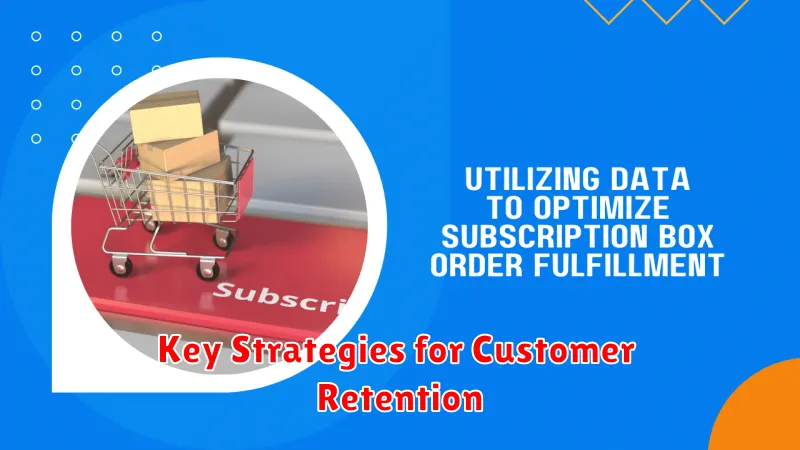In today’s dynamic digital landscape, subscription-based e-commerce has emerged as a powerful business model, revolutionizing how businesses interact with their customers and generate revenue. This comprehensive guide delves into the intricacies of subscription-based e-commerce, providing invaluable insights into its mechanics, benefits, and strategic implementation. Whether you are a seasoned entrepreneur, a burgeoning startup, or simply curious about the power of recurring revenue, this guide will equip you with the knowledge necessary to unlock the potential of subscription-based e-commerce and thrive in the competitive online marketplace. We will explore various subscription models, discuss key considerations for building a successful subscription business, and analyze the evolving trends shaping the future of this rapidly growing sector.
From subscription boxes and curated subscription services to membership programs and digital content subscriptions, the possibilities within the realm of subscription-based e-commerce are vast. This guide will navigate you through the essential elements of building a thriving subscription business, including customer acquisition, retention strategies, and effective subscription management. By understanding the nuances of recurring revenue models, pricing strategies, and the importance of fostering strong customer relationships, you can leverage the power of subscription-based e-commerce to achieve sustainable growth and establish a loyal customer base. Join us as we unlock the secrets to success in this transformative business model.
Understanding the Subscription Model
The subscription model is a business model where customers pay a recurring fee for access to a product or service. This recurring revenue stream provides businesses with predictable income and fosters long-term customer relationships. Predictability is a key advantage, allowing businesses to forecast revenue and manage inventory more effectively.
In the context of e-commerce, subscription models can take various forms. Customers might subscribe to receive a curated box of goods regularly, access digital content, or benefit from ongoing services. The core principle remains consistent: a recurring exchange of value between the business and the subscriber.
Understanding the different subscription types is crucial for selecting the right model for your business and target audience. Furthermore, a deep understanding of the recurring billing process and customer management aspects is essential for successful implementation.
Benefits of Subscription-Based E-Commerce for Businesses
Subscription-based e-commerce offers a wealth of advantages for businesses. One key benefit is predictable recurring revenue. This steady income stream allows for better financial forecasting and planning.
Another significant advantage is improved customer lifetime value. By fostering ongoing relationships with subscribers, businesses can cultivate loyalty and increase the total revenue generated from each customer.
Reduced customer acquisition costs are also a compelling benefit. Retaining existing subscribers is generally less expensive than acquiring new ones, freeing up resources for other business initiatives.
Furthermore, subscription models provide valuable insights into customer behavior and preferences. This data can be leveraged to personalize offerings and improve the overall customer experience.
Finally, subscription services allow for better inventory management. Knowing the anticipated demand facilitates more efficient procurement and reduces the risk of overstocking or stockouts.
Types of Subscription Services
Understanding the diverse landscape of subscription services is crucial for tailoring your offering to specific customer needs. Several distinct models exist, each catering to a unique market segment.
Curation Subscriptions
These services focus on delivering a curated selection of products, often personalized to the subscriber’s preferences. Think meal kits, beauty boxes, and clothing subscriptions. Personalization is a key driver in this model.
Replenishment Subscriptions
Replenishment services cater to the regular need for essential items. This includes things like pet food, razors, and household goods. Convenience is the primary selling point here, ensuring customers never run out of necessary products.
Access Subscriptions
Access subscriptions grant members exclusive perks and privileges, often for a recurring fee. Streaming services, software subscriptions, and premium memberships fall under this category. Value-added benefits are the focus, providing more than just a product.
Building a Successful Subscription Business
Building a thriving subscription business requires careful planning and execution. Product selection is paramount. Choose products or services that lend themselves well to recurring purchases, such as consumables, regularly updated content, or ongoing services. A compelling value proposition is essential. Clearly articulate the benefits subscribers receive, emphasizing convenience, cost savings, or exclusive access.
Seamless onboarding is crucial for converting potential subscribers into paying customers. Simplify the signup process and provide clear instructions on managing their subscriptions. Flexible subscription options cater to diverse customer needs and budgets. Offer different tiers with varying features or quantities, allowing customers to choose the option that best suits them.
Invest in a robust e-commerce platform designed to handle recurring billing and subscription management. This platform should integrate with other essential business tools like CRM and marketing automation systems. Lastly, establish clear communication channels to keep subscribers informed about updates, promotions, and important information.
Key Strategies for Customer Retention

Retaining subscribers is crucial for the long-term success of any subscription-based business. Active and consistent engagement is key. Regularly communicate with your subscribers, providing valuable content, updates, and exclusive offers.
Personalization plays a vital role. Tailor your communication and offerings based on individual subscriber preferences and purchase history. This demonstrates that you value their business and understand their needs.
Offering exceptional customer service is paramount. Be readily available to address any concerns or issues promptly and efficiently. A positive customer experience fosters loyalty and encourages long-term subscriptions.
Proactive feedback collection is essential for continuous improvement. Regularly solicit feedback through surveys or polls to understand customer satisfaction and identify areas for improvement. Acting upon this feedback demonstrates a commitment to meeting subscriber needs.
Finally, a flexible subscription model can greatly improve retention. Offer various subscription tiers and options to cater to different needs and budgets. Allowing subscribers to easily manage their subscriptions, including pausing or upgrading, adds convenience and encourages continued engagement.
Choosing the Right Platform and Tools
Selecting the right platform and tools is crucial for the success of your subscription-based e-commerce business. The platform should seamlessly handle recurring billing, subscription management, and customer data.
Consider these key factors when evaluating platforms:
- Scalability: Can the platform handle your growth projections?
- Flexibility: Does it offer the customization you need for your specific business model?
- Integrations: Does it integrate with your existing tools, such as payment gateways, email marketing platforms, and CRM systems?
- Pricing: Does the pricing structure align with your budget and projected revenue?
Beyond the core platform, consider essential tools like:
- Subscription Management Software: Automates recurring billing and manages subscriber lifecycles.
- Analytics Dashboards: Provide insights into key subscription metrics.
- Customer Support Systems: Facilitate efficient communication with subscribers.
By carefully evaluating platforms and tools based on your specific needs, you can establish a strong foundation for your subscription e-commerce venture.
Marketing and Promotion Techniques for Subscription Services
Attracting and retaining subscribers requires a targeted marketing approach. Leveraging various promotional techniques is crucial for driving initial sign-ups and fostering long-term loyalty.
Content marketing plays a vital role. Creating valuable, relevant content, such as blog posts, articles, or videos, establishes your brand as an authority and attracts potential subscribers. This content can highlight the benefits of your subscription service and address common customer pain points.
Social media marketing is essential for reaching a wider audience. Engaging content, targeted advertising, and influencer collaborations can generate buzz and drive traffic to your subscription landing page. Running contests and giveaways can also incentivize sign-ups.
Email marketing remains a powerful tool for nurturing leads and communicating with existing subscribers. Personalized email campaigns can promote new subscription options, offer exclusive discounts, and provide valuable updates.
Referral programs can leverage the power of word-of-mouth marketing. Incentivizing existing subscribers to refer new customers can be a highly effective way to expand your subscriber base.
Partnerships with complementary businesses can expose your subscription service to a new audience. Collaborating with businesses that share your target market can significantly expand your reach.
Metrics and Analytics for Subscription E-Commerce
Monitoring key metrics is crucial for understanding the health and growth of your subscription business. Analyzing these data points allows you to identify trends, optimize strategies, and make informed decisions to improve overall performance.
Churn Rate is arguably the most critical metric. It represents the percentage of subscribers who cancel their subscriptions within a given period. A high churn rate can signal problems with your product, pricing, or customer service.
Monthly Recurring Revenue (MRR) tracks the predictable revenue generated from subscriptions each month. Growth in MRR indicates a healthy and expanding subscriber base.
Customer Lifetime Value (CLTV) estimates the total revenue a customer will generate throughout their relationship with your business. Understanding CLTV helps inform marketing spend and customer acquisition strategies.
Customer Acquisition Cost (CAC) measures the cost of acquiring a new subscriber. Keeping CAC lower than CLTV is essential for profitability.
Legal and Regulatory Considerations for Subscription Businesses

Navigating the legal landscape is crucial for subscription-based e-commerce success. Several key areas demand careful attention.
Data Privacy and Security
Protecting customer data is paramount. Compliance with regulations like GDPR and CCPA is mandatory, requiring clear data collection and usage policies. Robust security measures are essential to prevent breaches and maintain customer trust.
Automatic Renewals and Cancellations
Transparency is key. Clearly disclose renewal terms, including frequency and cost. Provide easy-to-understand cancellation procedures. Avoid deceptive practices that make it difficult for customers to opt out.
Consumer Protection Laws
Familiarize yourself with relevant consumer protection laws. These laws often address issues like refunds, unfair billing practices, and misleading advertising. Staying compliant avoids legal challenges and maintains a positive brand image.
Contractual Agreements
Clear and concise terms of service are essential. Outline the responsibilities of both the business and the subscriber, including details on service delivery, payment terms, and dispute resolution processes.

